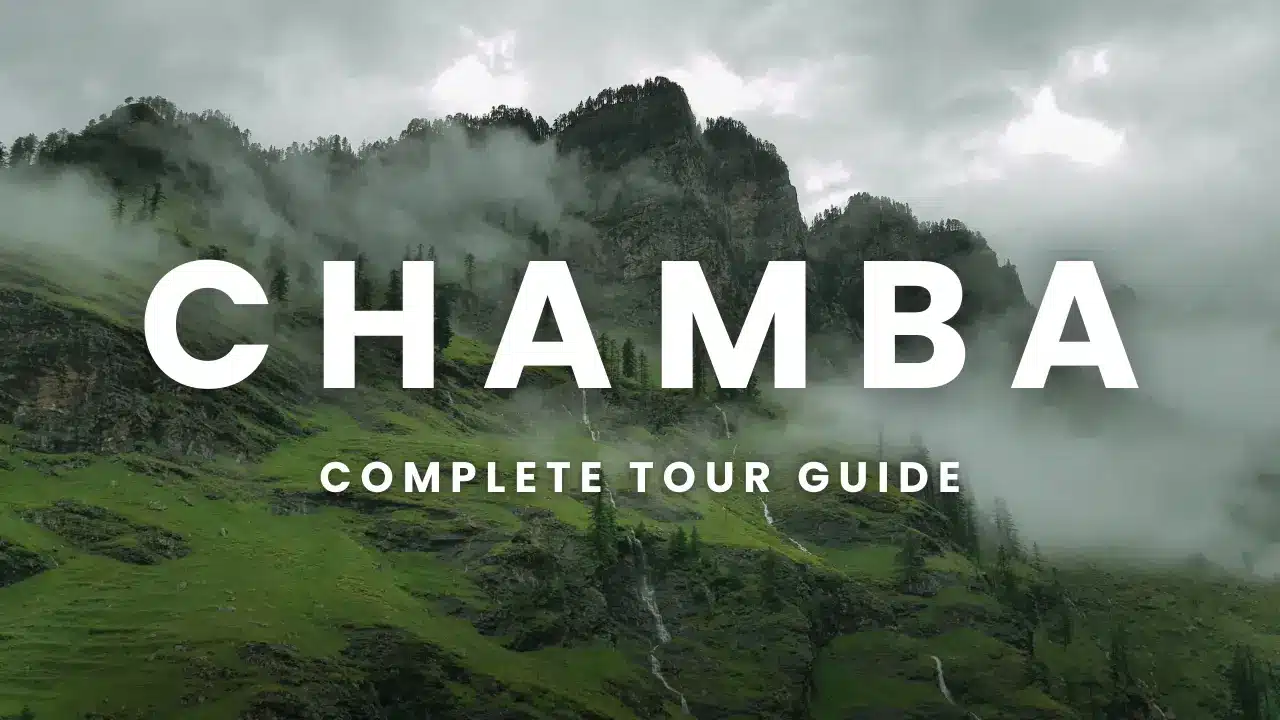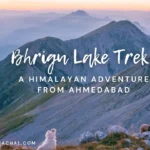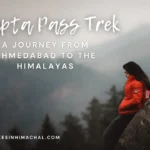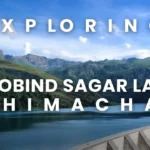Tucked away in Himachal Pradesh’s northwest corner, Chamba isn’t your typical hill station. Sure, it boasts stunning landscapes with the Ravi River whispering secrets by its side. But Chamba’s true magic lies in its ancient temples, each a portal to a rich history. Here, adventure and tranquillity go hand in hand, promising a unique experience for every traveller – whether you’re seeking the peace of a hidden temple or the thrill of exploring untouched beauty.
Best Time to Visit Chamba
Chamba enjoys a pleasant climate throughout the year, with each season offering a distinct charm:
Chamba’s a chameleon, changing its charm with the seasons. Summer (March to June) is a hiker’s paradise, with comfortable temperatures perfect for exploring. The monsoon (July to September) paints the landscape emerald green, but be prepared for occasional rain showers that might slow your journey. Winter (October to February) transforms Chamba into a wonderland, dusted with snow and ideal for winter sports enthusiasts.
Summer (March to June)
Summer is a hiker’s paradise, with comfortable temperatures perfect for exploring, sightseeing and outdoor activities. The temperatures range from 15°C to 30°C.
Monsoon (July to September)
The monsoon paints the landscape emerald green but be prepared for occasional rain showers that might slow your journey. The region receives moderate rainfall, making the landscape lush and green.
Winter (October to February)
Winter transforms Chamba into a wonderland, dusted with snow and ideal for winter sports enthusiasts. Perfect for experiencing snowfall and enjoying winter sports, with temperatures dropping to -1°C.
How to Reach Chamba
Getting to Chamba is part of the adventure. While there’s no direct flight, the nearest airport in Gaggal, Dharamshala (about 120 km away) could be your gateway. Taxis will whisk you from the airport to Chamba’s doorstep. Himachal Pradesh is very well serviced by HRTC buses which is a good option for travelling within the state and also nearby towns and cities. Trains chug into Pathankot station (roughly 118 km away), where you can find onward buses or taxis. Road warriors can take the scenic route from major cities like Delhi, Chandigarh, or Shimla, with regular buses and taxis available. For bus bookings, I would suggest downloading apps like Redbus and other similar apps which are very convenient and easy.
- By Air: The nearest airport is Gaggal Airport in Kangra, about 120 km away. Taxis are available from the airport to Chamba.
- By Rail: The nearest railway station is Pathankot, around 118 km away. From Pathankot, you can hire a taxi or take a bus.
- By Road: Chamba is connected by road to major cities like Delhi (580 km), Chandigarh (400 km), and Shimla (340 km). Regular bus services (HRTC and private) and taxis are available.
Chamba Tourist Attractions
Chamba Palace:
An architectural gem, Chamba Palace showcases the region’s rich history and culture. The palace, with its intricate carvings and stunning views, is a testament to the grandeur of the bygone era.
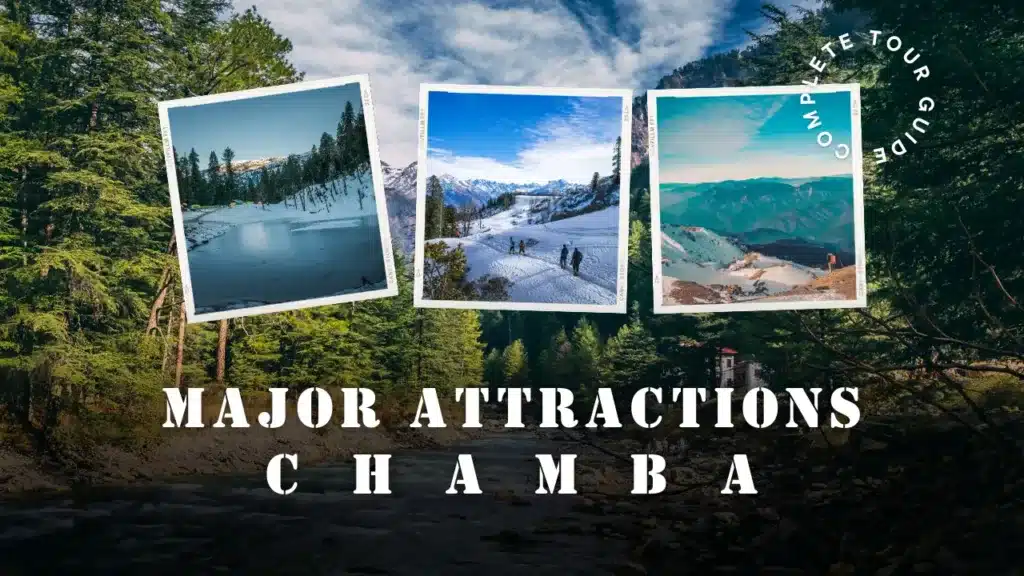
Lakshmi Narayan Temple
This 10th-century temple complex is the oldest and largest in Chamba, dedicated to Lord Vishnu. The temple’s exquisite stone carvings and serene ambience make it a must-visit.
Bhuri Singh Museum
Established in 1908, the museum houses a rich collection of Chamba’s cultural heritage, including ancient manuscripts, coins, sculptures, and paintings.
Chamunda Devi Temple
Perched on a hilltop, this temple offers panoramic views of the town and the Ravi River. It is dedicated to Goddess Chamunda, a form of Goddess Durga.
Khajjiar
Often referred to as the “Mini Switzerland of India,” Khajjiar is a scenic plateau surrounded by dense forests and snow-capped peaks. The Khajji Nag Temple, dedicated to the serpent god, is a key attraction here. There is also a small lake known as Khajjiar Lake.
Manimahesh Lake
Situated at an altitude of 4,080 meters, this sacred lake is a significant pilgrimage site. The annual Manimahesh Yatra attracts thousands of devotees who trek to the Manimahesh lake, believed to be the abode of Lord Shiva.
Activities & Things to do in Chamba
Trekking and Hiking.
Chamba offers numerous trekking trails for adventure enthusiasts. Popular treks include the Chamba to Bharmour trek and the Manimahesh trek.
Camping
Set up camp amidst the serene landscapes of Khajjiar or near the banks of the Ravi River.
Wildlife Spotting
Visit the Kalatop Khajjiar Sanctuary to spot a variety of wildlife, including deer, leopards, and a wide range of bird species. One can also trek from Kalatop to Khajjiar while witnessing some wildlife on the way. I did this small trek a couple of years ago.
River Rafting
The Ravi River provides opportunities for river rafting, especially during the summer months.
Local Festivals
Experience the vibrant culture of Chamba by participating in local festivals like the Minjar Fair, held in August, celebrating the harvest season.
Hotel and Accommodation in Chamba
Chamba offers a range of accommodation options to suit all budgets. I would suggest checking booking sites like Goibibo, Yatra, Makemytrip, Agoda etc for information and booking of hotels.
- Luxury Hotels. The Iravati Hotel, Orchard Huts, and Classic Hill Top.
- Mid-range Hotels. Hotel City Heart, Aroma Palace, and Hotel Ashiana Regency.
- Budget Stays. Hotel Champak, Chamunda View, and Hotel Aroma Palace.
Local Cuisine
While in Chamba, indulge in the local Himachali cuisine. Must-try dishes include:

Chana Madra: A yogurt-based chickpea curry seasoned with aromatic spices.
Dhaam: A traditional festive meal comprising rice, lentils, rajma, curd, and boor ki kari.
Babru: A deep-fried bread stuffed with black gram paste, typically served with tamarind chutney.
Kullu Trout: A delectable fish dish seasoned with local spices and cooked to perfection.
Travel Tips
- Pack Accordingly: Carry warm clothes, especially if travelling in winter. Comfortable walking shoes are a must for trekking.
- Stay Hydrated: The altitude can cause dehydration, so drink plenty of water.
- Respect Local Culture: Be mindful of local customs and traditions, especially when visiting temples and interacting with residents.
- Check Road Conditions: If traveling during monsoon or winter, check road conditions in advance due to possible landslides or snow.
Conclusion
Chamba, with its enchanting landscapes, historical landmarks, and rich cultural heritage, promises an unforgettable experience. Whether you’re seeking adventure, spirituality, or simply a peaceful retreat, this charming town in Himachal Pradesh has something for everyone. Plan your trip to Chamba and immerse yourself in the beauty and tranquillity of this Himalayan gem.
History of Chamba
Watch this space ……….
